Discover the ultimate collection of black girl hairstyles that showcase natural beauty, creativity, and cultural expression. From protective styles to bold colors, these versatile looks will inspire your next transformation.
Black girl hairstyles represent a rich tapestry of cultural heritage, personal expression, and stunning beauty. These versatile styles range from time-honored protective techniques that nurture hair health to contemporary fashion-forward looks that make bold statements. Whether you’re embracing your natural texture, transitioning between styles, or seeking inspiration for your next hair transformation, this ultimate guide showcases 50 breathtaking options that celebrate the incredible diversity and artistry of black hair styling.
With that thought in mind, we have put together a list of cool black girl hairstyles that will provide you with a lot of inspiration and amazing ideas to try out!
1. Box Braids
We’re starting off with some simple and basic black girl hairstyles. Box braids have been a style staple in the past few years. What we most love about them is that not only will they make you look cool and fresh, but they are a great protective hairstyle as well.
2. Updated Box Braids
Now that we’ve seen what the basic version looks like, here’s how you can build on that. These are blonde box braids and they are also jumbo, not thin. They also have a lot of silver embellishments added to them, which you can match to the jewelry that you’ll be wearing.
3. The Curly Bob
Black girl hairstyles don’t necessarily have to be only those traditional ones that you’ll already thinking of. For example, this is a very beautiful curly bob painted in a cherry cola red that we absolutely adore. Pair it with some huge hoop earrings and you’ve got a winner look!
4. The Blonde Afro
There are many versions of the afro you can try when it comes to black girl hairstyles, but this just happens to be one of our favorites. The color is absolutely amazing – it’s a dark honey blonde with burnt caramel streaks.
5. Kids Hairstyles – French Braids Top
The amazing thing about black girl hairstyles is that you can mix and match them. For example, you can start off with a few French braids at head level and then simply finish off with an all-natural afro. Perfect!
6. Colorful Space Buns
Space buns have been a very cool trend over these past years. They started off as a festival hairstyle, but girls love them so much that they started wearing them every day. The picture above shows you a colorful half up half down version that you can easily replicate or adapt to better fit your tastes.
7. Jumbo Goddess Braids
When it comes to goddess braids, you have two options. You can either go the classical way and have multiple braids all over your head. Or, you can just choose two jumbo ones. You will look like a diva no matter what option you go for, of that we are sure.
8. Stone Gray Hair with Undertones
Speaking of divas, here is one hair color that is bound to transform you in the neighborhood diva overnight. It’s a matte stony gray complete with extensions. The extensions are highly important here as they will give you additional volume and length.
9. Adorable Black Girl Hairstyles
It’s difficult to find black girl hairstyles that can make these little dolls even more adorable than they already are. But we believe that these braided buns can actually do the trick. They are also a great way to protect a child’s hair as bunned hairstyles can act as a protective style.
10. Braided Hairstyles with High Top Bun
These side cornrows mixed with some truly fantastic twists had us all gaping. They truly are perfection in a pic! Not to mention that we went nuts for the golden hair embellishments which serve only to enrich this amazing long hair style.
11. Protective Black Girl Hairstyles
If you’re an Afro-American queen, you already know just how important protective hairstyles really are. Therefore, we suggest you try some old-fashion braids that will help keep your natural locks safe and sound.
12. The Woodland Fairy Queen
Don’t be afraid of unconventional colors. The trick here is to discuss with your stylist and choose a shade or color that will work best with your skin tone. For example, this shade of pastel pink seems to simply illuminate the skin and the baby breath helps bring it out even more! Though you might need some bobby pins to keep them in place.
13. Technicolor Black Girl Hairstyles
Have you ever dreamed in technicolor? This is what your hair will look like! It is an amazing dream of shades and hues that will mesmerize everyone. In this case, it’s a combination of blues and purples with just a touch of pink here and there.
14. Medium-Length Soft Waves
Beach waves are extremely easy to obtain if you happen to know a few simple tips & tricks. The simplest way would be to invest in a high-quality sea salt spray and let your blow-dry do the rest of the work. Otherwise, you can look up tutorials on YouTube.
15. Blue Neon Buns
We love traditional black girl hairstyles but we are crazy about modern ones too! These neon blue buns have a 90s nostalgia feel to them. At the same time, they are modern enough for you to pass as a regular hip chick.
16. The Lob or Long Bob
Here is an idea for you business ladies. This is a straight lob (or long bob) with an asymmetrical set of long bangs parted to one side. The color is warm cinnamon spiked with a few strands of caramel here and there.
17. Hairstyles for Black Women with Hair Accessories
Box braids and hair accessories go together like peanut butter and jelly. Everyone knows that. The amazing thing about it is the complete freedom you have when putting them on. Simply use your imagination!
18. The Summer Child – Black Hair with Flowers
If you are looking for your next festival look or simply for a special styling choice for your next night out, look no further! You cannot go wrong with flowers and naturally curly hair. Make sure your makeup and accessories match your new look.
19. The High Headwrap
One of the most elegant black girl hairstyles you can try out is the high headwrap. Granted, it will take a while before you properly learn how to tie it, but it will all be worth it in the end. The sheer elegance of the style has no match.
20. The Blunt Cut Bob
Sometimes, black girl hairstyles take a turn towards the minimal look. This is what the blunt cut bob is all about. The main point of attraction with this cut is its choppy ends for which your stylist will likely use a razor. Don’t attempt this at home on your own!
21. Peacock Blue Wavy Hair
A tip from the pros of styling: you can create a splash not necessarily with the cut, but with the color. This is an amazing blue ombre that goes from a metallic light gray into a vibrant peacock blue. Watch how the colors melt seamlessly into one another and accentuate the hair waves.
22. Natural Black Girl Hairstyles
You know what they say: nothing is easier than natural! Therefore, if you want a haircut or a hairstyle that is extremely easy to maintain, we suggest you go all-natural, both in cut and in color. No headaches and no extra money spent on grooming! Just go with a long hair afro!
23. Black Girl Hairstyles with High Ponytail
Life is not worth living if it doesn’t have a little bit of edge. Think outside of the box and let go of the vanilla style. Go for an unconventional color for your hair and make it stand up even more by going for a high ponytail.
24. The Ballerina Bun
One of the most beloved and most practical hairstyles out there has to be the ballerina bun. Every girl knows it or can learn to do it in a heartbeat. Not to mention that it’s both beautiful and elegant and will look gorgeous on African American hair.
25. 90s Style Perfect Twirls
We’re back to the more traditional black girl hairstyles with these perfect twirls. They used to be all the rage in the 90s and are now making a huge comeback thanks to that decade making a re-entrance as well!
26. Natural Hairstyles with Headscarves
If you just love headscarves but you don’t know exactly how to tie, style, or wear them, don’t be afraid! There are tons of tutorials on YouTube or Pinterest that will teach you how to do it in no time.
27. Long and Straight Hair
Black girl hairstyles come with one major advantage: there isn’t one girl out there who hasn’t got one amazing head of hair. This is what happens when you use a straightener on that head of hair or when you add extensions. We’re getting major Rapunzel envy out of this one!
28. Ghana Braids
Ghana braids are one of the most famous traditional hairstyles there are. This is an African hairstyle and the braids are also known as banana braids or pencil braids. They are also considered a variety of cornrows but whatever you choose to call them, let’s just all agree they are gorgeous!
29. The Faux Hawk
If you happen to have short dreads, here’s a cool thing you can do with them: faux hawk! Since it’s a faux, you won’t actually have to shave the sides of your head. Just make it look like a cool punk hairstyle from the 80s!
30. The Lupita Nyong’o
Actress Lupita Nyong’o burst onto the silver screen a few years ago with her role in 12 Years a Slave, role for which she also won an Oscar. Besides her acting skills, we also love her boyish pixie cut and the fact that she wears her hair short.
- Quick Hairstyle Hacks: Easy Professional Styles for Busy Women
- Hair Color Trends: Breathtaking Shades and Styles to Try This Season
- Pastel Pink Hair: 50+ Beautiful Hairstyle Ideas and Color Inspiration
31. The Rihanna
As far as black girl hairstyles as concerned, good girl gone bad Rihanna has been through almost all of them. We decided to stop at Bantu knots this time around because we think she looks absolutely wonderful, especially with her makeup choice.
32. The Beyonce
No black girl hairstyles list could have been possible without the queen herself, Beyonce. She too has sported almost every hairstyle known to man and beast. We have chosen this high and very slick braid as it makes her look so elegant and empowered.
33. Bombshell Black Girl Hairstyles
Let’s be honest for a moment: we all need some bombshell moments in our lives. Whether it’s for a special event or just a date, this finger waves high ponytail will definitely do the trick and make you look like the queen of the night!
34. Yarn Braids
Braids come in all shapes, sizes, and colors. But did you know they also come in various fabrics? For example, if you don’t want to get traditional hair extensions, you can opt for braids made out of yarn.
35. The Jumbo Pigtails
It’s all about teasing the hair with this type of hairstyles. After you’ve combed everything out and teased it with a soft brush, you can create two jumbo bubble braids. Use hair colored elastics or all sorts as embellishments.
36. The Alicia Keys
When singer Alicia Keys swore off makeup, she decided to go all-natural on her hair as well. Therefore, you saw her sporting her naturally curly hair as well as a fresh and happy makeup-free face.
37. The Flower Crown
Although it did start off as a festival fad, the flower crown slowly made its way into street style too. As a result, these days you can see girls on every street corner dressed as casually as possible and wearing flower crowns on their heads.
38. The Medusa Dreads
Although mythology usually pinpoints her as a monster, in some versions Medusa actually started out as a very beautiful maiden. Her beauty was actually what attracted and lead to her head full of snakes. But back to our head of braids now: Medusa dreads is the name given to coils of long and thin dreadlocks perched on top of the head.
39. Bantu Knots
We continue our countdown of bunned hairstyles with another Bantu Knots idea. Here, they’ve been paired with a beautiful makeup whose simplicity and light gold color make it absolutely stunning.
40. The Long and Blue Afro
Even though afros are a sight to behold all on their own, you might want to step up your game in the fast-paced world of fashion and style trends. One solution would be to choose a cooky color for your afro, such as this gorgeous blue.
41. The Pixie Cut
There are few haircuts out there that are as easy and as versatile as the pixie cut. In this example, you can see one with a very high and teased out top with cropped sides and back. The secret here is that it will add a few inches to your height (in case you need them).
42. The Lauryn Hill
Singer Lauryn Hill’s signature dreadlocks hairstyle is almost as famous as she is. Her very beautiful face was perfectly framed by the medium-sized and thin dreads.
43. Purple Bantu Knots
Since we’ve seen traditional Bantu knots, we can also take another peek at some colorful ones. This is what indigo and purple Bantu knots look like, complete with makeup in matching shades.
44. The Iman
One of the most beautiful women of all time, Iman can really do no wrong when it comes to the realm of fashion and styling. Here she is sporting a natural, medium length afro, a proud supporter of black girl hairstyles.
45. The Blue Buzz Cut
Since we’re talking about black girl hairstyles, this buzz can’t be just any cut. In fact, it’s a metallic blue buzz cut, with pearly white roots. You can also consider adding in a bit of ombre.
- Flower Girl Hairstyles: 50 Adorable Ideas for Every Wedding
- Thanksgiving Hairstyles: 30 Easy and Elegant Looks for the Holiday
- 60 Halloween Hairstyles: Stunning Ideas for Spooky Season
46. The Short and Pink Finger Waves
The roaring 20s will never stop being a source of inspiration for us, nor for black girl hairstyles, for that matter. Here is an idea of a long pixie cut, bright pink in color and styled with finger waves, just like they did in the 20s.
47. The Blonde and Slick Pixie
A pro tip here would be that, if you’re planning on going platinum or ice blonde, discuss this move with your stylist! It’s important to find a shade that matches your skin tone as well as the color of your eyes prior to making this big change.
48. Short, Blonde, and Afro
The thing that impressed us most about this hairstyle was the color. This creamy honey with cinnamon roots has us melting away.
49. Casual Waves in Ponytail
Beach waves are always a good idea whether you’re actually at the beach or not. They can make you look cool and fresh. If your hair is already somewhat curly or at least wavy, and you have that basis to work with, we can honestly say we envy you.
50. Honey and Chestnut Two-Tone Hair
Two-toned black girl hairstyles are worthy of so much praise. For example, these jumbo curls are half-light honey blonde and half dark chestnut.
Frequently Asked Questions
What are the best protective hairstyles for black hair?
The best protective hairstyles include box braids, goddess braids, twists, bantu knots, and high buns. These styles minimize manipulation, reduce breakage, and help retain moisture while allowing your natural hair to grow healthy underneath.
How often should I change my black hairstyle?
It depends on the style type. Protective styles like braids can be worn for 6-8 weeks, while twist-outs and wash-and-go styles typically last 3-7 days. Natural styles without extensions should be refreshed every 2-3 days for optimal appearance and hair health.
Can I color my natural black hair safely?
Yes, but it requires proper preparation and professional expertise. Deep condition your hair beforehand, use ammonia-free products when possible, and always follow up with intensive moisture treatments. Consider consulting a colorist experienced with textured hair for best results.
What products work best for maintaining black hairstyles?
Essential products include sulfate-free shampoos, deep conditioners, leave-in treatments, natural oils (jojoba, argan, coconut), styling creams for definition, and satin pillowcases or bonnets for nighttime protection. Choose products specifically formulated for your hair texture and porosity level.
Ready to Change Your Look?
What do you think about our choices for black girl hairstyles? Which ones did you like best – the Bantu knots, the goddess braids, the Ghana braids, the afro, or the simple and casual wavy hair?
Let us know in the comment section down below because we would love to hear from you!
- Quick Hairstyle Hacks: Easy Professional Styles for Busy Women
- Hair Color Trends: Breathtaking Shades and Styles to Try This Season
- Pastel Pink Hair: 50+ Beautiful Hairstyle Ideas and Color Inspiration
- Angled Bob Haircuts: Stylish Ideas and Trending Cuts for Modern Women
- Asymmetrical Haircuts: 50+ Stylish Ideas and Trending Cuts for Modern Women
- Stunning Pastel Hair Color Ideas for Women: 50 Dreamy Shades and Styles
What are the best products for maintaining natural black hairstyles?
The best products for natural black hair include moisturizing leave-in conditioners, natural oils (like jojoba, argan, or coconut), water-based moisturizers, protein treatments, and styling creams or butters specifically formulated for textured hair. Look for products without harsh chemicals, sulfates, or alcohols that can dry out curly/coily hair textures.
How can I prevent breakage when styling black hair?
To prevent breakage, always detangle gently starting from the ends working upward, use a wide-tooth comb or detangling brush, avoid styling when hair is dry, maintain proper moisture-protein balance, minimize heat styling, use protective styles, trim regularly to remove split ends, and sleep on a satin or silk pillowcase or use a bonnet.
Which black hairstyles are best for professional settings?
Professional black hairstyles include neat twists, sleek buns, defined twist-outs, well-maintained locs, polished pixie cuts, and structured bob styles. While all natural hairstyles should be acceptable in professional environments, these styles tend to be versatile and corporate-friendly while still honoring natural textures.
How can I transition from relaxed to natural hair?
To transition from relaxed to natural hair: start with protective styles like braids or twists to minimize manipulation of the two textures, deep condition regularly, trim relaxed ends gradually, use products designed for transitioning hair, be patient with the process, and consider a big chop when ready. The transition typically takes 10-18 months depending on hair growth rate.







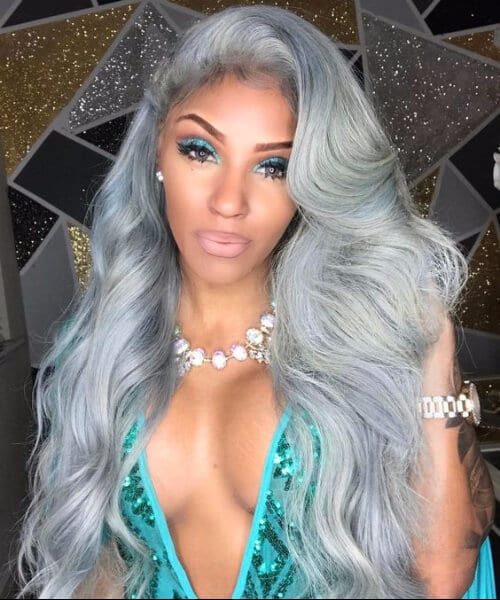



















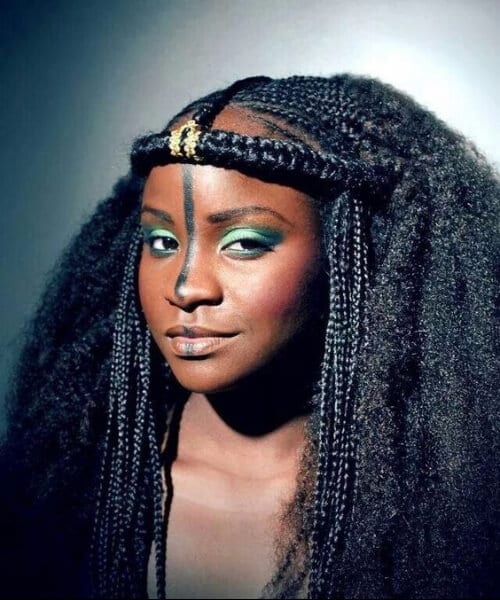





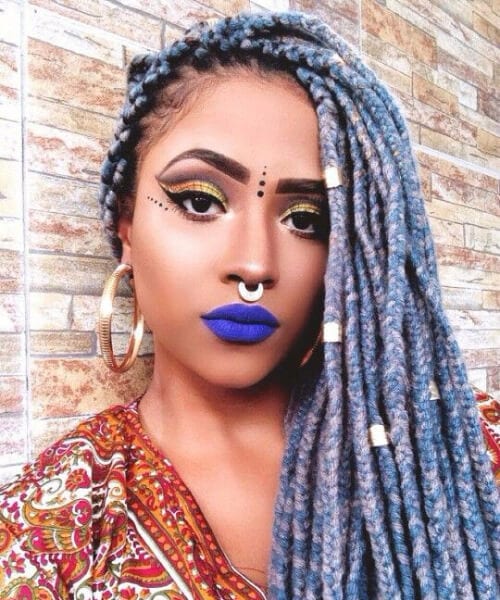







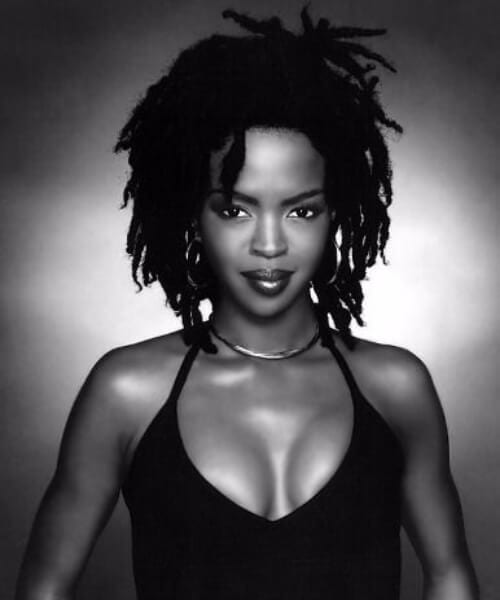




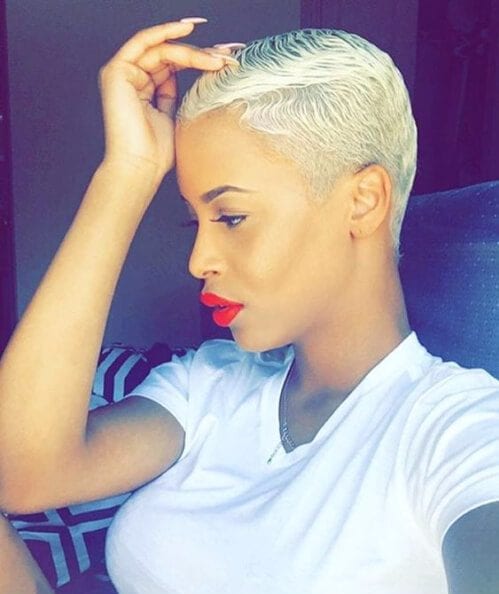










I suggest a change to the title. “50 hairstyles for women of color” Saying these styles are for “black girls” implies that you are black. I don’t wanna bust your balls but I had to put it out there..🤷🏾♀️